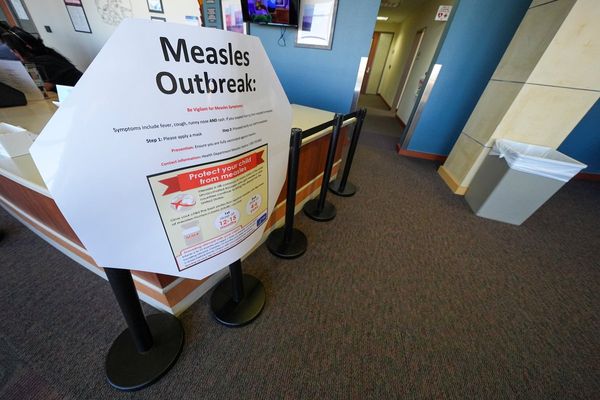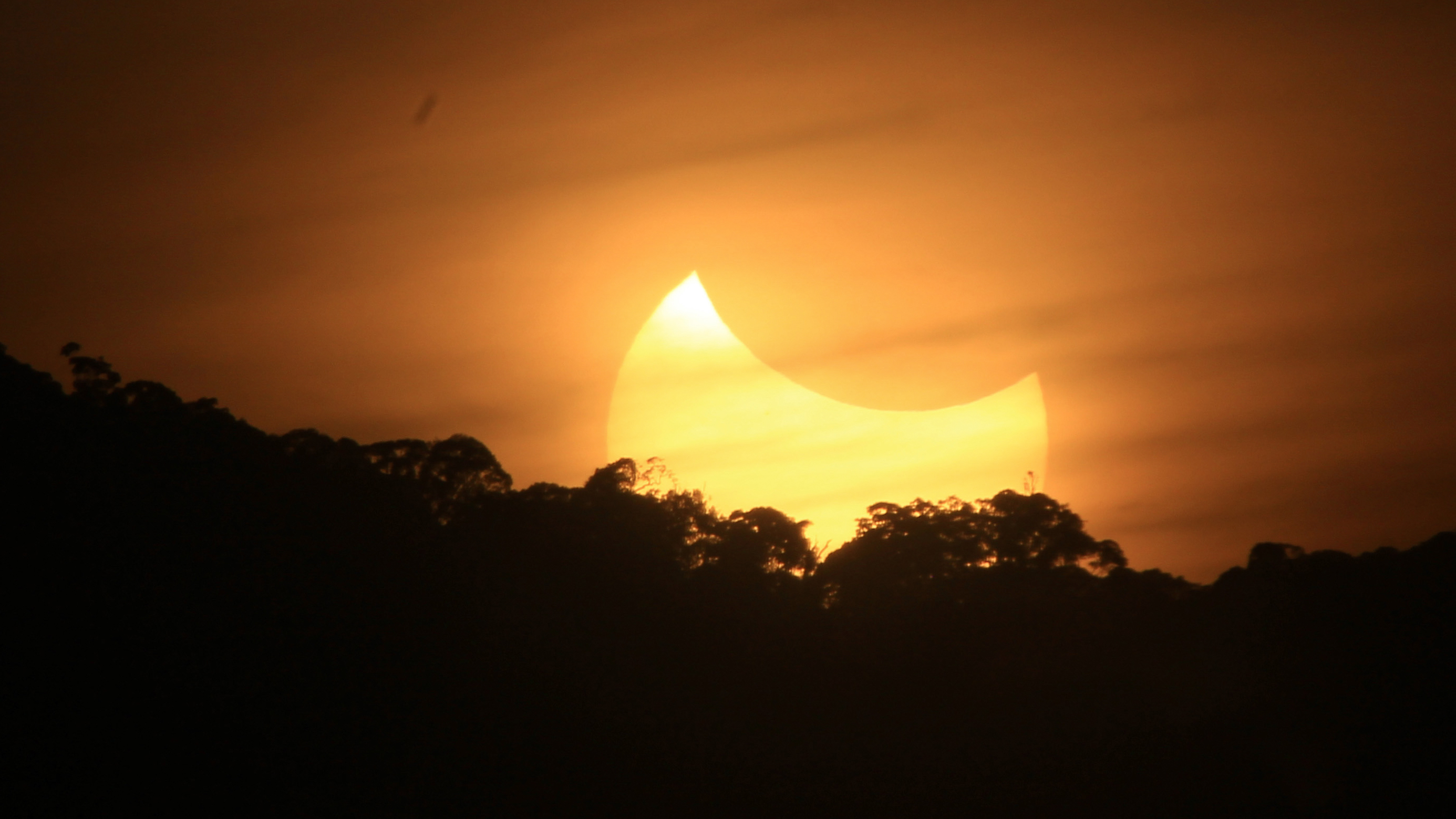
The first of two solar eclipses in 2025 – and the only one visible from the northern hemisphere – will have astrophotographers and stargazers out in force this weekend, with those in eastern North America set to have the most dramatic views. Observers in this area, including myself, will – clear skies allowing – be treated to a partial solar eclipse to remember as up to 93 percent of the sun is blocked by the moon during sunrise.
And while the northeastern US and eastern Canada will likely get the best views, the solar eclipse will also be visible in Western Europe, albeit with less obscuration (31 percent in London). As always, you must use solar eclipse glasses and solar filters if you intend to photograph the eclipse on March 29.
So, what can you expect to see from your location? What tools and techniques will you need to photograph the eclipse? And how can you stay safe while capturing the Sun? Here’s everything you need to know about the upcoming partial solar eclipse this weekend…
Both solar and lunar eclipses present great photo opportunities and they always follow each other. This solar eclipse comes in the wake of the total lunar eclipse on March 13/14.
When and where is the solar eclipse?
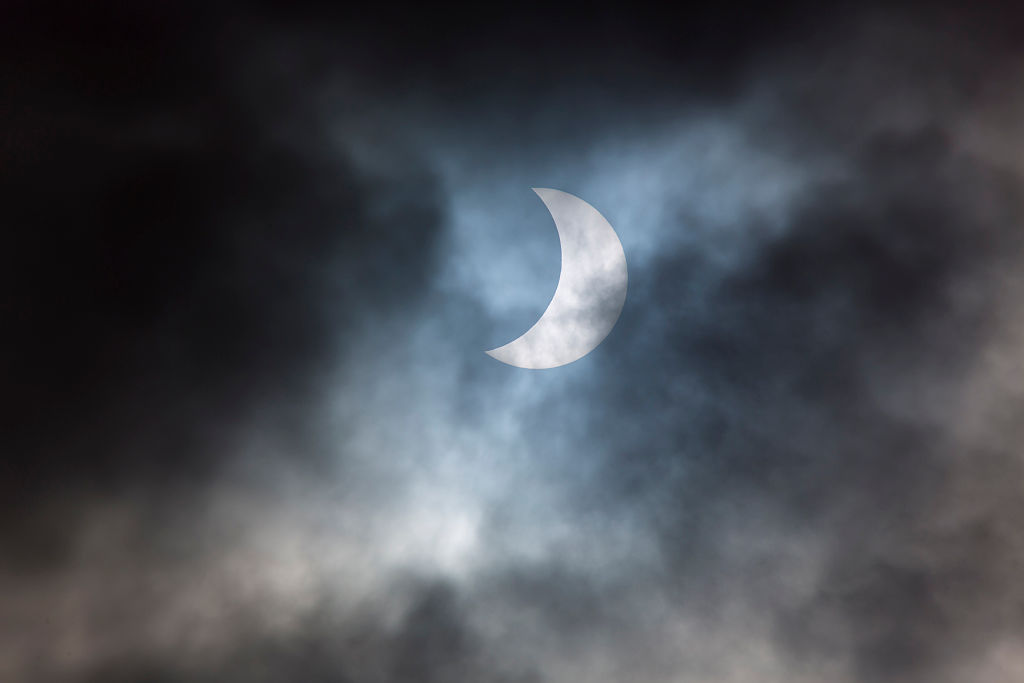
Your view of the partial solar eclipse on March 29 will vary greatly depending on your location. This map can be used to gather data on your exact location. For example, eastern North America will get the best views, with up to 93 percent obscuration in northern Quebec and 83-85 percent obscuration in southwestern New Brunswick, Canada and in northeastern Maine, US. Exact timings will differ from location to location, with the sunrise line running through these three regions determining whether the eclipse is at its maximum before, at or after sunrise.
In Montreal, for example, the maximum eclipse will take place before sunrise, but a 46-percent eclipsed sun will be seen at sunrise at 6:42 EDT. In New York, close to the sunrise line but far from there, the most eclipse can be seen, a maximum 21-percent eclipse will be seen at 6:44 EDT, just two minutes after sunrise. In St John’s, Newfoundland, the eclipse begins at 6:57 NDT, shortly after sunrise, and will be 82-percent eclipsed at 7:53 NDT.
According to Live Science, the solar eclipse will be visible in 13 US States. The eclipse will be visible in much of Europe, too. London will see 31-percent obstruction, with the eclipse peaking at 11:03 GMT.
The last solar eclipse — an annular “ring of fire” eclipse — was on October 2, 2024, but it was only visible in parts of South America and the South Pacific. The next solar eclipse, after this month’s, will be on September 21, 2025. However, it will only be visible from New Zealand, Tasmania in Australia, the South Pacific, and Antarctica. Visit Timeanddate.com and enter your location to find out exactly what you’ll see, as well as local timings.
A solar eclipse can be a dangerous event, especially for photographers. Read on to find out how to keep safe.
Why you MUST use solar filters on your camera
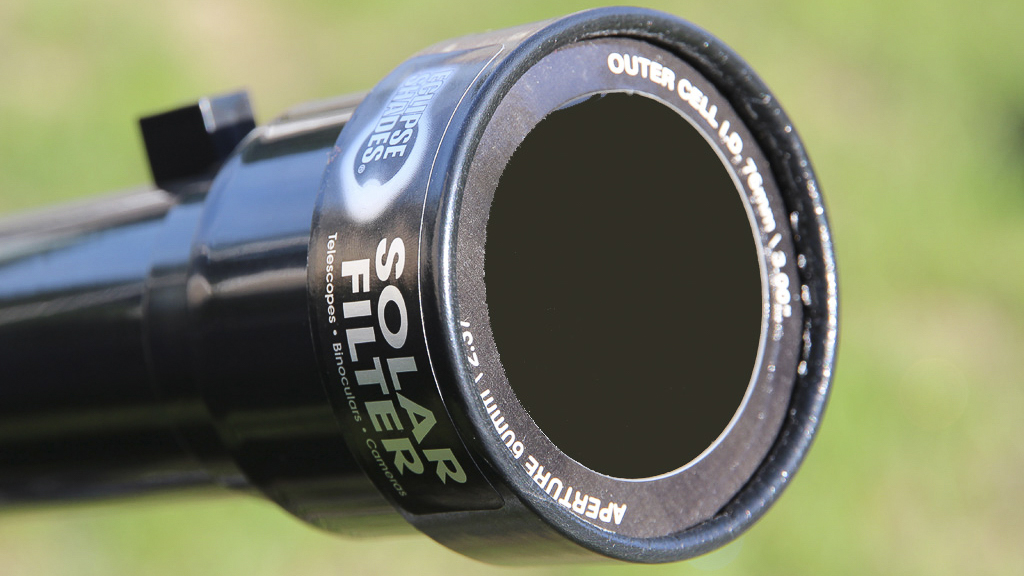
The Sun’s infrared and ultraviolet rays are incredibly dangerous. You must use solar eclipse glasses to look at this event and put solar filters on the front of any telescope, binoculars or camera lens. Never look through a camera’s optical viewfinder; always use the LCD screen instead.
Take a look at the best solar filters for Digital Camera World's top picks. You will also find options to purchase solar film so you can make your own filters. Traditional filter manufacturers such as LEE, Marumi, Hitech, and Hoya also make special neutral-density filters that are dark enough to use as solar eclipse filters.
Where, when and how to plan a shot of the solar eclipse
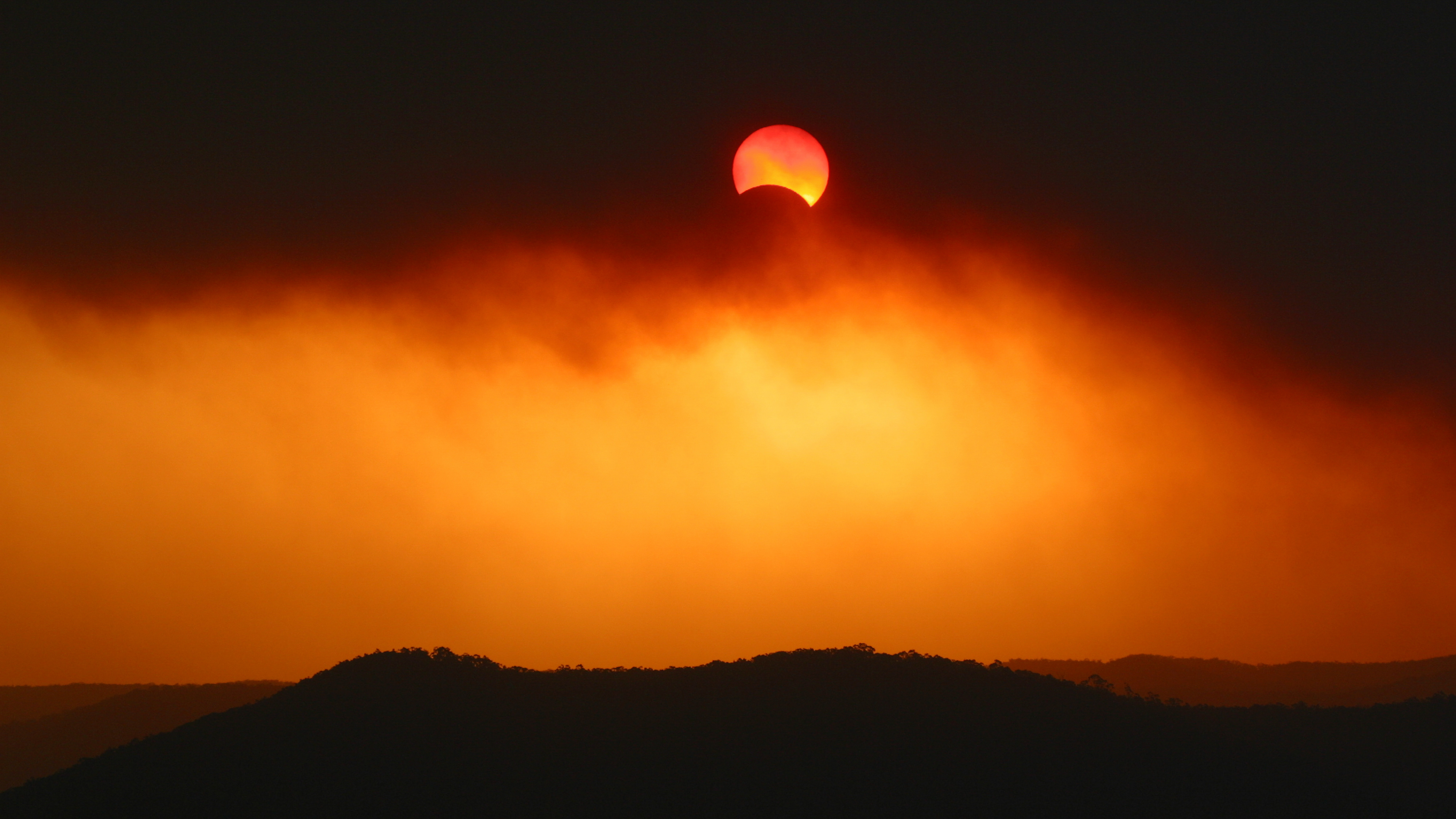
If you’re traveling to photograph this partial solar eclipse at sunrise, a low east-northeast horizon is very important. You need to double-check that your location will have a clear sight-line to the rising sun. Consult the aforementioned interactive Google Map of this eclipse (which has handy links to PeakFinder so you can check out your horizon) and use The Photographer’s Ephemeris or PhotoPills apps to help you plan your shot in exquisite detail.
If you’re photographing the eclipse when it’s higher in the sky, there are no special precautions to take aside from protecting your eyes and camera equipment. For example, Europeans will see an eclipsed Sun reasonably high in the sky.
How to photograph the partial solar eclipse
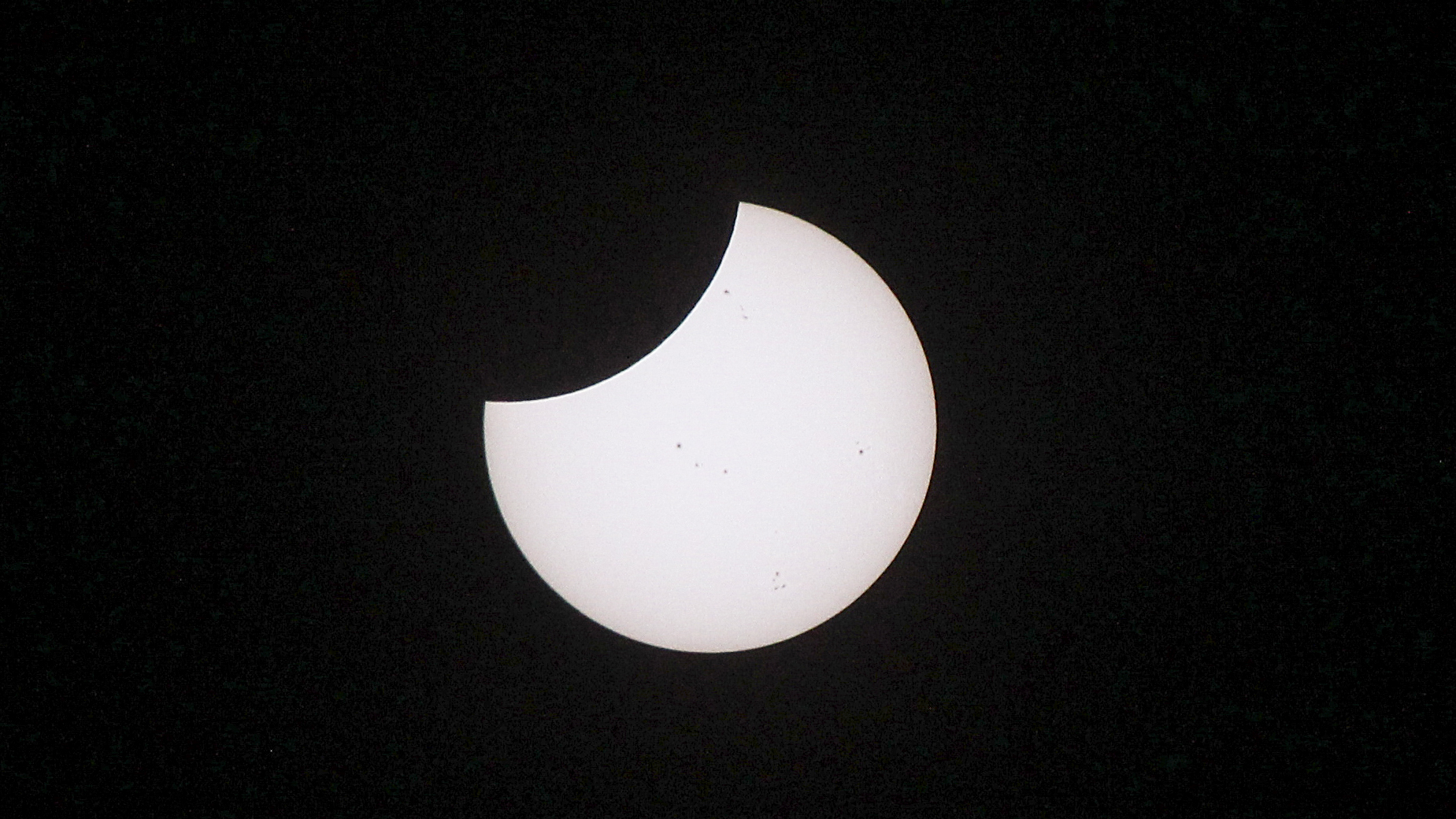
Get hold of a white-light solar filter. If you don't, then this project is a non-starter. It would also be helpful to get the longest telephoto lens you can find; 300mm will suffice, but 600mm is better (see best 150-600mm lenses). A 1.4x extender will bump up the focal length (see best teleconverters), but it may be at the cost of sharpness. Set the aperture to between f/5.6 and f/8. With your camera and long lens on a tripod, use your LCD screen on ‘live view’ to find the eclipsed Sun and then auto focus on the edge of the Moon.
Put your camera into manual mode to lock that focus, set it to ISO100 and try shutter speeds of between 1/500sec to 1/1000sec – consider bracketing either side of 1/500 sec. That’s some basic settings, but you’ll need to experiment – preferably on the Sun in the days before the eclipse – to learn what works for your camera and the sky conditions. Always shoot in the Raw format, and use the best camera remote or intervalometer so you can keep the entire rig perfectly still.
How to photograph the solar eclipse at sunrise and sunset
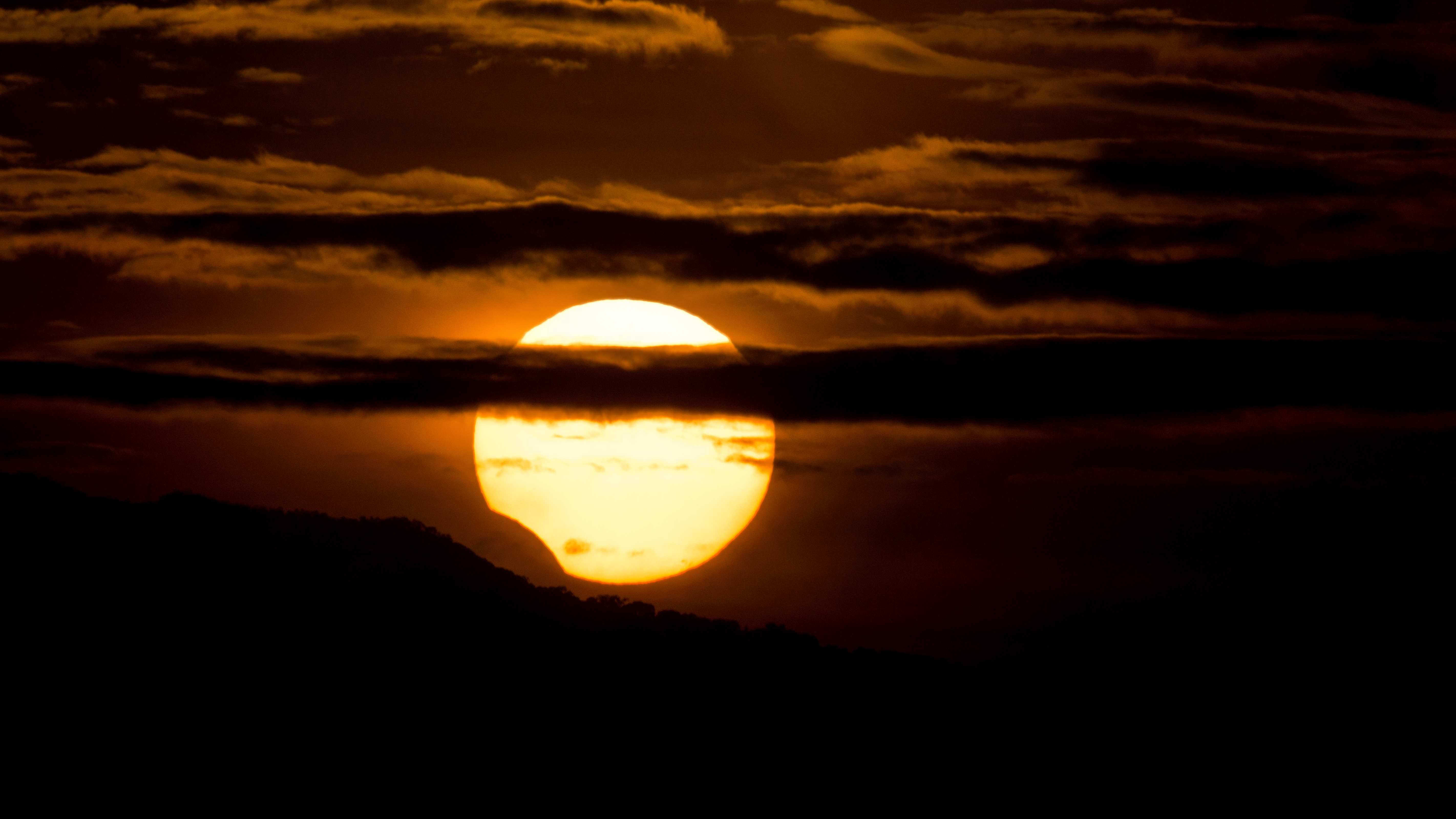
The partial solar eclipse will not be visible at sunset from any inhabited portion of Earth, but some regions in North America will get to witness a rare eclipsed sunrise. When Is The Next Eclipse has pinpointed specific locations in New Brunswick, Maine and Quebec as ideal sunrise spots (where the cusps of the sun will rise separately), but from the coast of New England – Massachusetts, New Hampshire and Maine – a rising eclipsed sun of some kind will be seen.
How to photograph the solar eclipse from the UK
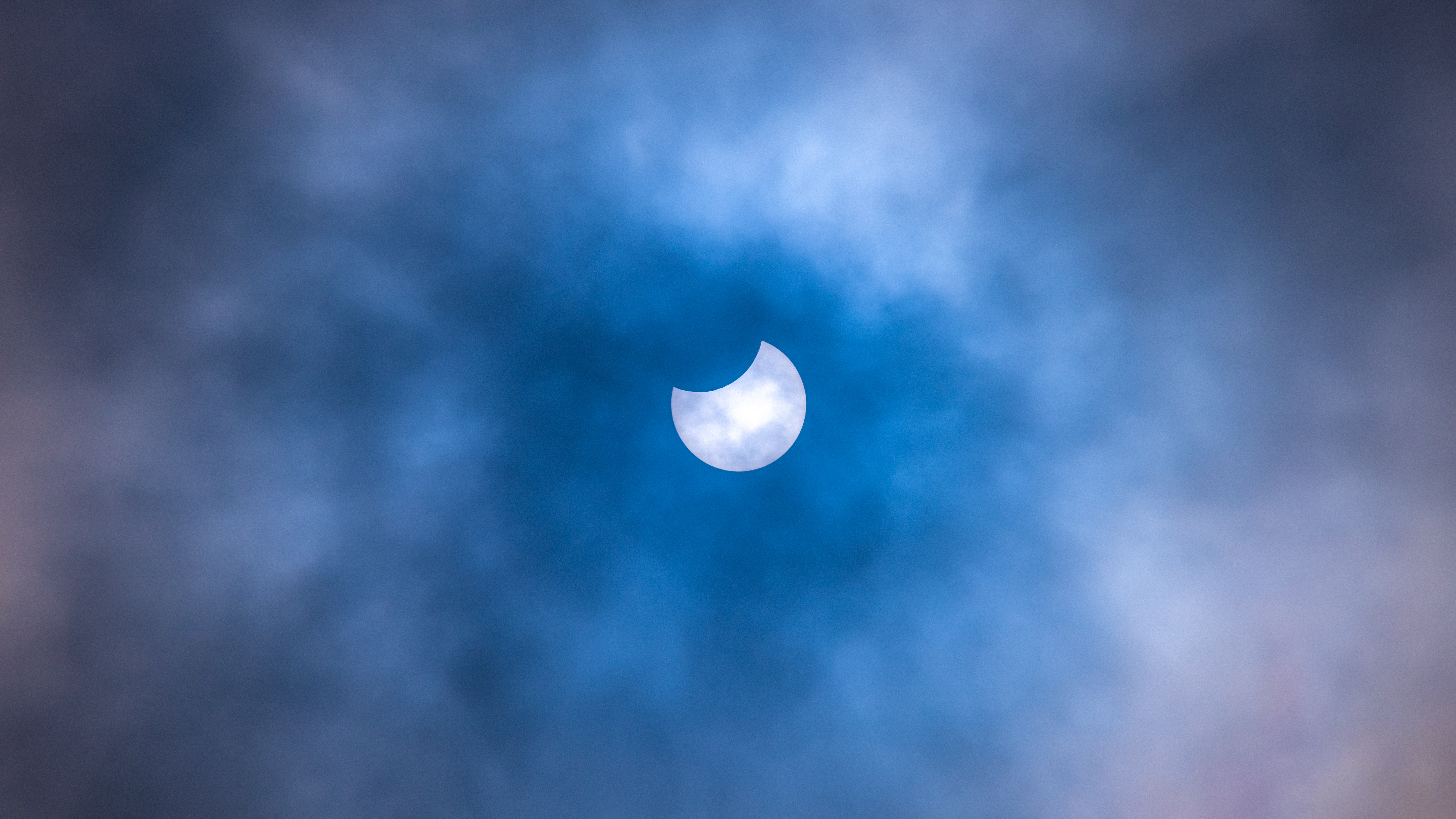
Things are different in Europe, where all photographers will need a solar filter whatever the weather. In London the eclipse takes place between 10:07 and 12:00 GMT, peaking at 11:03 when 30% of the Sun will be eclipsed. In Cardiff it’s 35% at 11:00 GMT, in Edinburgh it’s 40% at 11:07 GMT and in Belfast it’s 42% at 11:02 GMT. It will all happen at an altitude of about 35º-40º, so reasonably high up in the daytime sky. Finding a low horizon won’t be necessary.
Future solar eclipses
If the weather doesn’t play nice, or it proves too technical, there’s always another eclipse. The next solar eclipse occurs on September 21, but the only inhabited region where this partial eclipse will be visible is the south of Australia.
The next solar eclipse visible in the Northern Hemisphere will be the total solar eclipse on August 12, 2026, which will bring a brief totality to Greenland, Iceland and Spain, and partial phases to Europe and North America.
Jamie Carter is editor of WhenIsTheNextEclipse.com
You might also like...
If you're looking to capture more celestial images, here's How to improve your astrophotography. If you're looking to upgrade your kit, take a look at the best lenses for astrophotography and the best star tracker camera mounts.



